Author: John-Joe Vollans
Photography: Volkswagen
VW’s second ever model certainly didn’t suffer from follow-up flop phenomenon, quite the opposite in fact. Volkswagen’s ‘Bus’ remains arguably the world’s most recognisable commercial vehicle; sorry Ford Transit, you’re a close second.
Astonishingly – although it’s changed immeasurably since – Transporter manufacture hasn’t stopped since it first kicked-off in 1950. During the intervening seven decades, more than 12.5 million have been made (and counting), making the 75-year-old (this year) Transporter Europe’s longest running commercial vehicle model. It all might never have happened, however, were it not for a fortuitous visit to Wolfsburg, in 1946, by future Dutch Volkswagen importer Ben Pon…
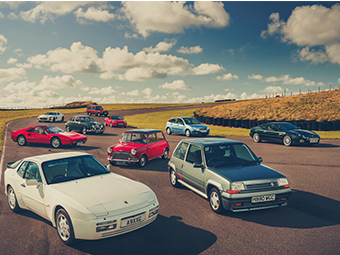
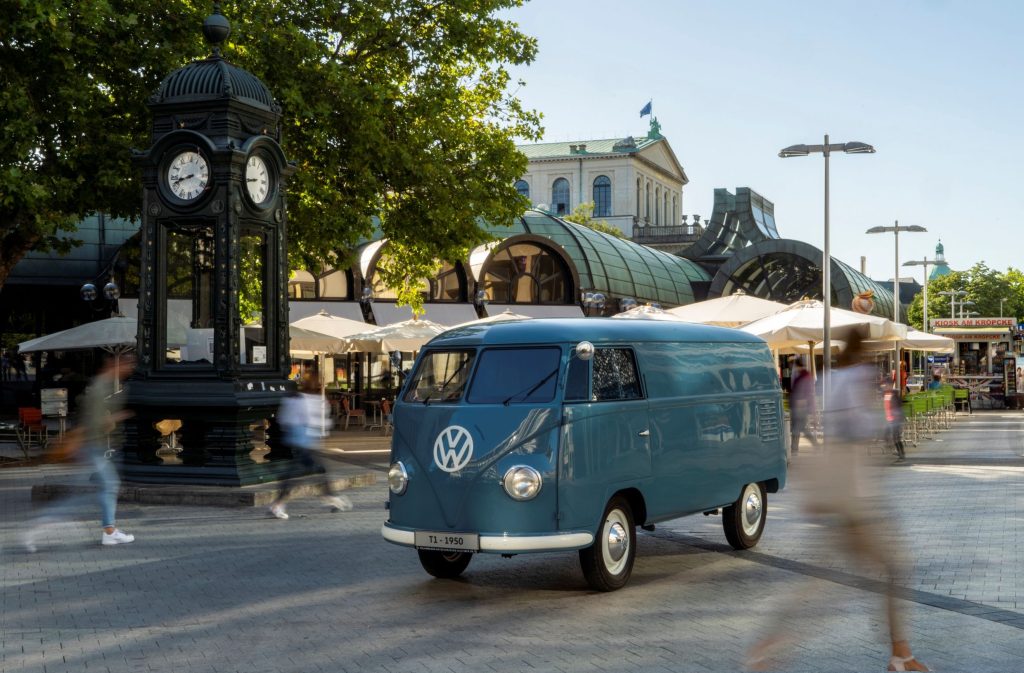
At the end of the war, the Volkswagen works had been placed under the trusteeship of the British army, who – under the stewardship of major Ivan Hirst – helped get the plant back up and running at full capacity. Once the quota of ‘Beetles’ – VW Type 1s technically – for army use had been met (20,000), the decision was made by the British government to allow Volkswagen to export and, eventually, passed the firm into German hands – after several allied car makers turned it down.
Around the same time as that famous automotive faux pas, Pon visited Wolfsburg to secure a source of export Beetles for the Netherlands, incidentally the first nation outside of Germany to get them in 1947. The story goes that during that visit, Pon saw the modified Beetle Plattenwagens that the resource strapped Wolfsburg staff were using to deliver parts around the factory. These were simply Beetles without their bodies, a driver’s seat popped above the engine, and a long flat panel replacing its front bodywork. With British military engineers having taken back the scant few forklifts they’d bought with them, the German workforce had to improvise.
Pon quickly drew a sketch of a more suitable production version of a Plattenwagen and it was that doodle, along with a more refined pitch, that duly found its way onto the desk of incoming German VW director, and former Opel engineer, Heinz Nordhoff. The rest, as they say, is history…
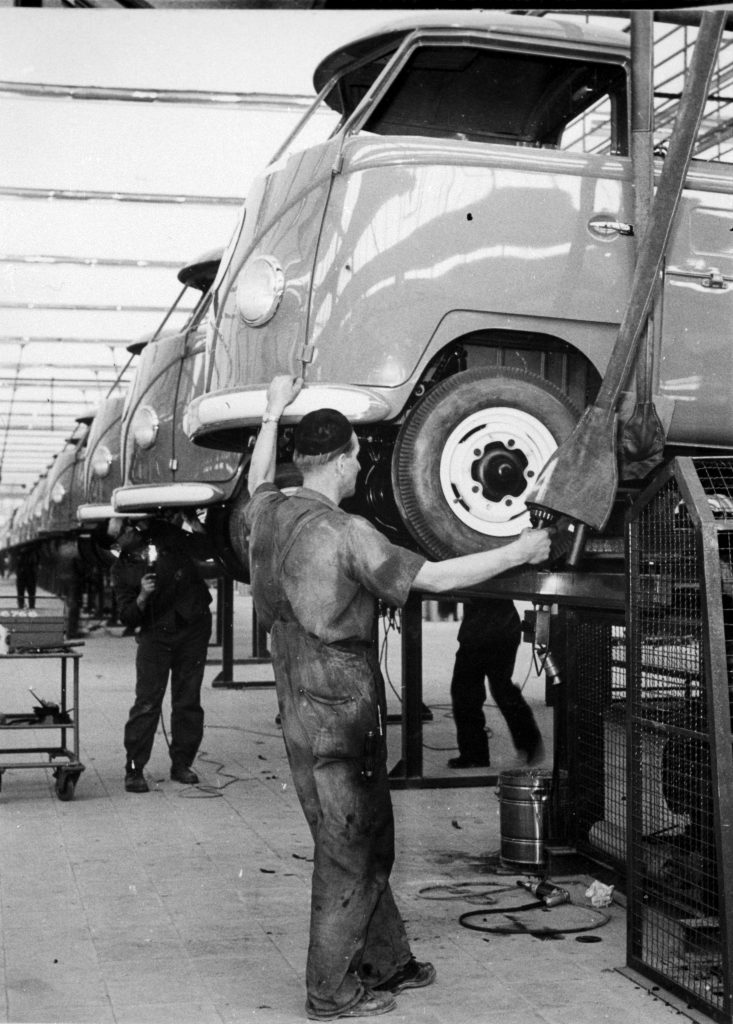
The Type 2 Transporter proper – its name confusingly shortened to T1 – entered production on 8 March, 1950. In a world still trying to clean up after the largest conflict in human history, particularly in the newly formed Federal Republic of Germany, the need for a relatively small and versatile light commercial vehicle couldn’t have been higher. Despite initially only being powered by the Beetle’s anaemic 1.1-litre flat four, the reduction-geared rear axle from the military Kübelwagen – plus some alleged tinkering by Porsche – helped the 975kg VW van manage a decent 50mph, with a load capacity of 750kg (1653lbs). Despite outward appearances, the Type 2’s bodywork had actually seen the inside of a wind tunnel. A far squarer prototype body design produced a barn-door like 0.75cd, so Nordhoff chose the more aesthetically – and wind-cheating – bubble design we all know and love, reducing that drag to a far more acceptable 0.45cd.
With a little more grunt (43bhp) soon available, it helped unlock a top speed of 60mph. Heady stuff.
Clearly, going quickly was never a part of the T1 plan, it was always about bringing versatility and reliability – through simple and tested mechanicals – to the masses.
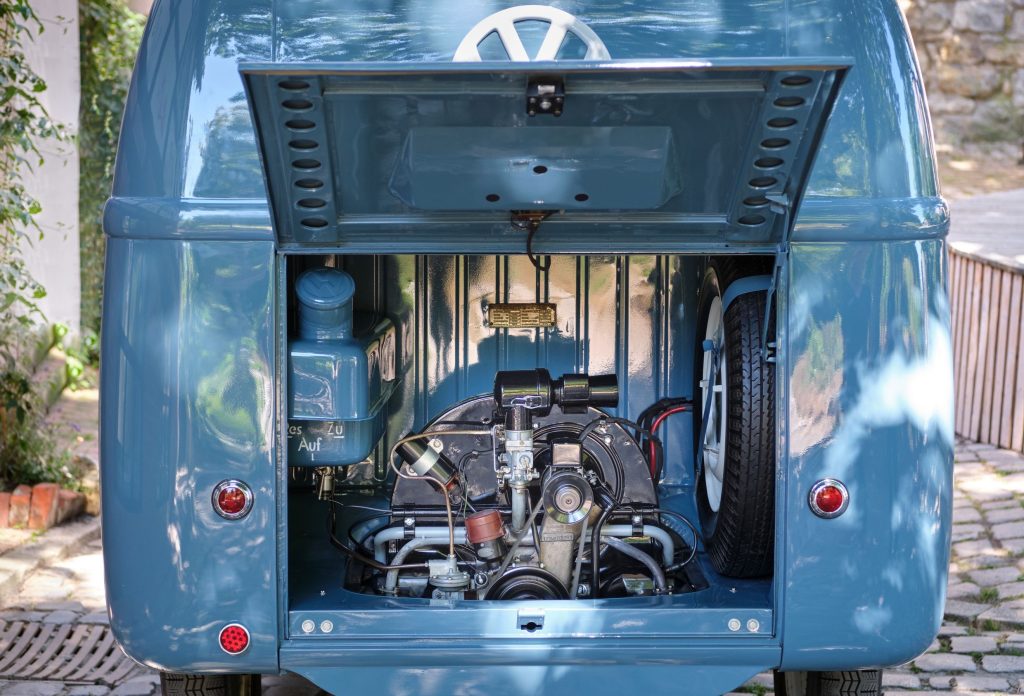
Body options for the Type 2, even from launch, extended to the original panel van (only available in Pigeon Blue or bare primer) Kombi (a mix of seats and load space) and a drop-side pick-up. You could even order a T1 cab-on-chassis, enabling you to add custom bodywork for even greater flexibility for more specific engineering or public service uses.
Priced exceptionally reasonably – at just DM 150 more than the Beetle – Volkswagen couldn’t build T1s quickly enough. To cope with the increased demand for both Beetle and T1, a new factory was built in Hannover, which took over T1 production from 1956.
Also, in tandem with its smaller sibling, the T1 saw constant development with significant improvements to transmission (synchronised ratios) and engine (displacement increases) as early as 1953. A few antiquated elements would remain including indicator flashers only added in 1960 and the barely adequate 6-volt electrical system eventually upgraded to 12-volts in the final year of production (1967). In that same year, Volkswagen tallied up Bus sales to an astonishing 1.8-million. Clearly a case of the right vehicle at the right time.
Perhaps the most historically significant T1s are the ‘Samba’ with its ludicrous number of windows (23 in the Deluxe form) and counter-culture camper conversions. The latter were carried out in period by Westfalia-Werke in Rheda-Wiedenbrück in western Germany. Part of that regional German territory came to be tagged on as shorthand for these desirable holiday holdalls.
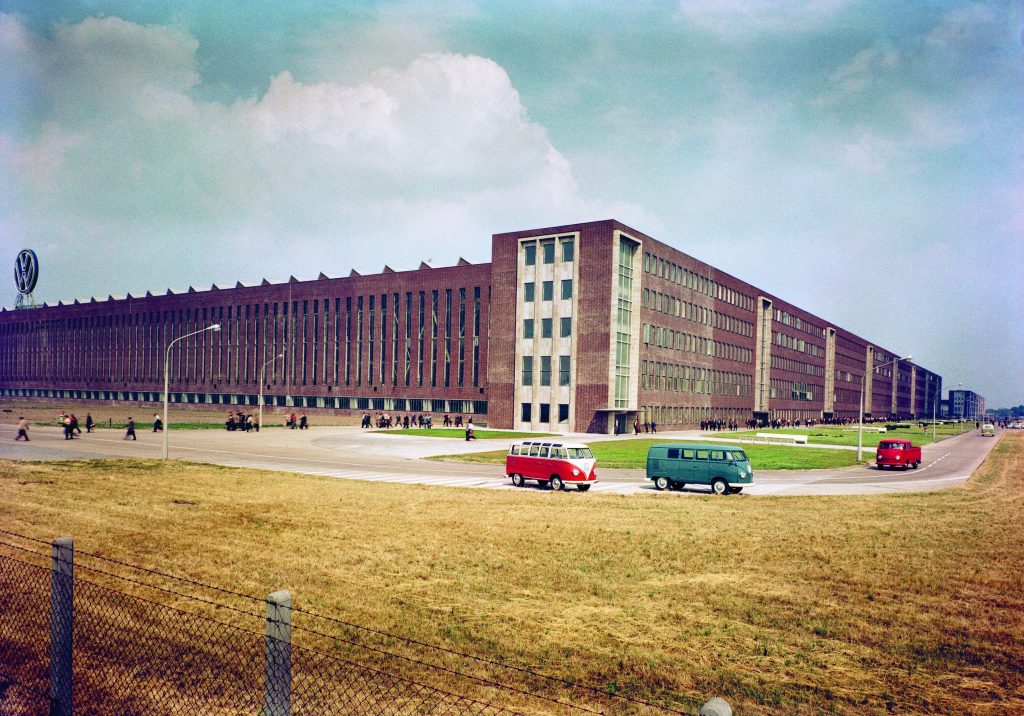
Just like its Beetle buddies, the original T1 would go on to be enormously popular with certain younger, often west coast American-based owners who espoused the healing powers of mother earth, flowers and other, ahem, mind-altering flora. The 1960s counter-culture movement in the USA seemingly couldn’t get enough Volkswagens, showing just how far the company image had transformed from its wartime inception.
Today, the ‘Splittie’ is the most collectible and desirable of air-cooled VW Buses and, as a general rule of thumb, the more windows one has, the more its worth. Sales figures that come with five zeroes on the end are far from unusual – somewhat ironic considering the ‘Peoples’ Car’ meaning of its maker’s moniker. These high values, however, are indicative of the perennial popularity of Volkswagen’s original people carrier, that’s still going strong three quarters of a century after its launch.
Got memories or stories about the VW Type 2? Whether you rode in one, restored one, or just love its legacy – we would love to hear from you in the comments below!
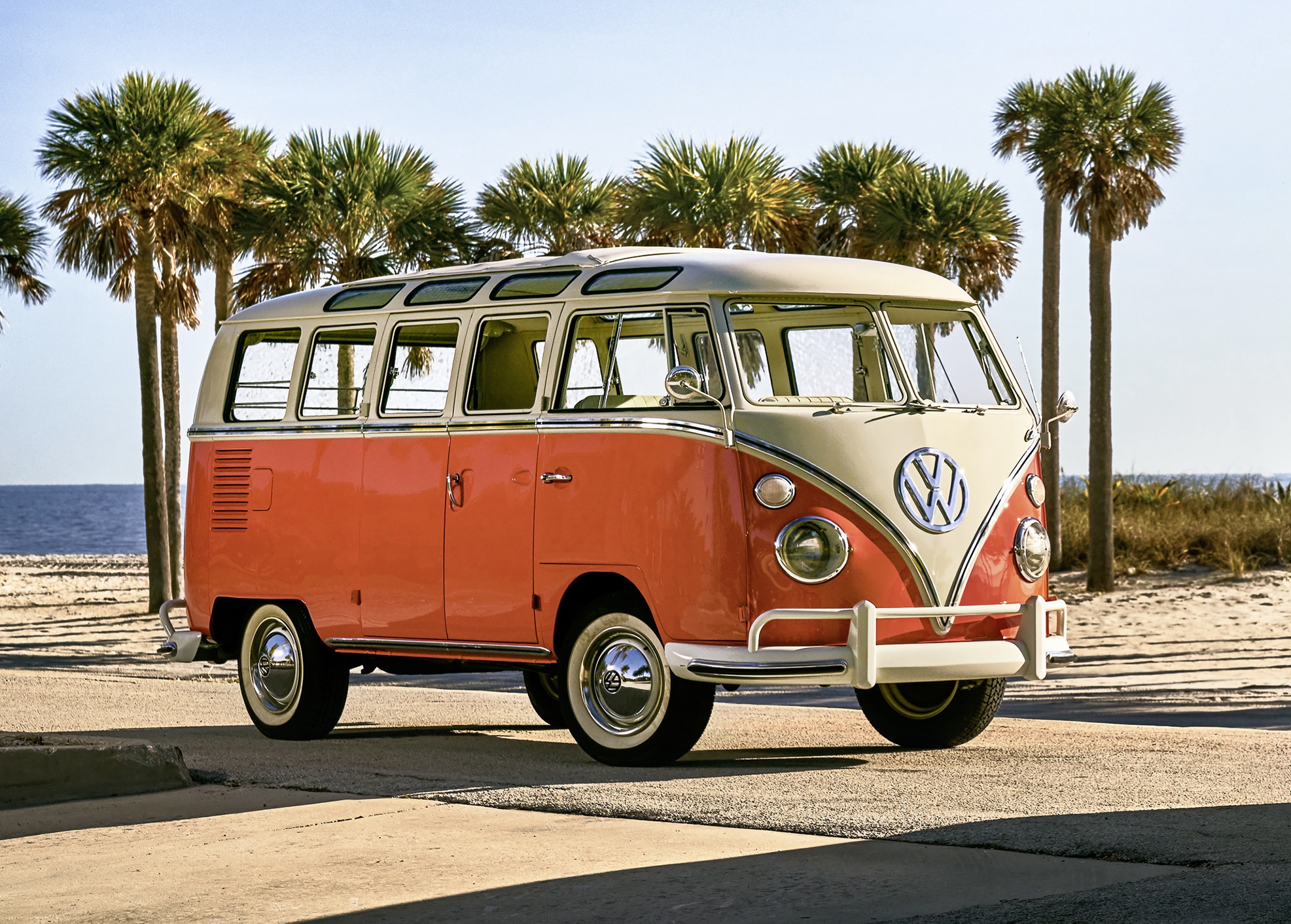
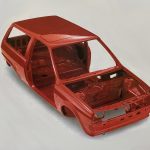







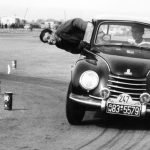
It has enormous “Thomas the Tank Engine” charm, which has carried it globally, but only the Germans would create such a mechanical limping Frankenstein.
My father had a ‘62 23 window that we all loved. He took the middle seat out once, loaded in a Lowery electric organ, drove it to an event, ran an extension cord, and played the organ in the bus. It only lasted one year in the family. My father’s boss told him that executives didn’t drive “cars like that,” strongly suggested he get rid of it, and gave him a white ‘63 Impala company car; our first with air conditioning. Cold comfort literally and figuratively!